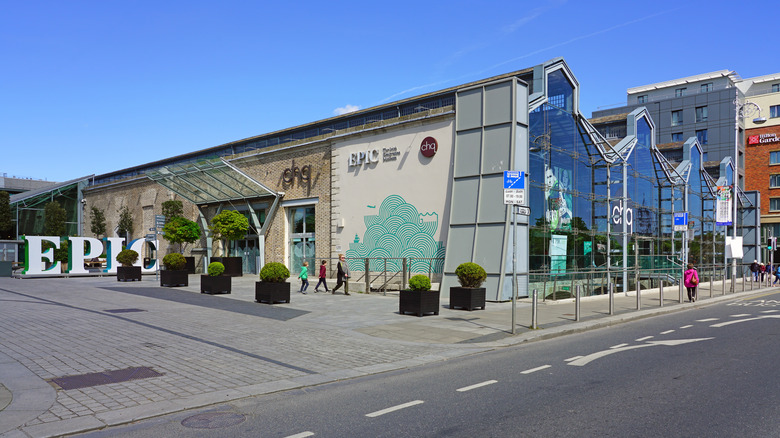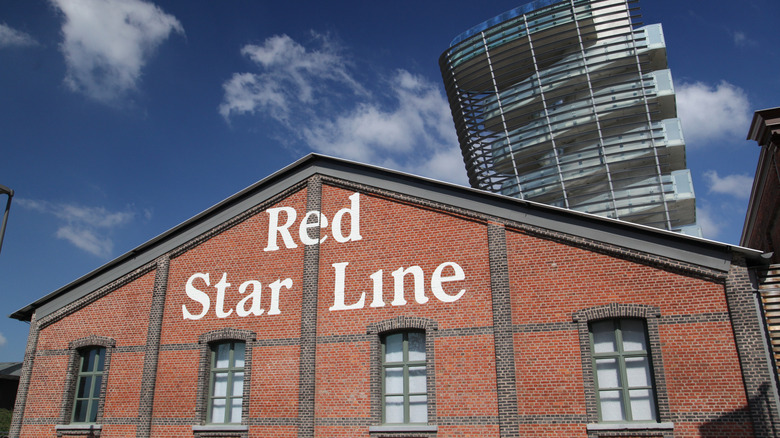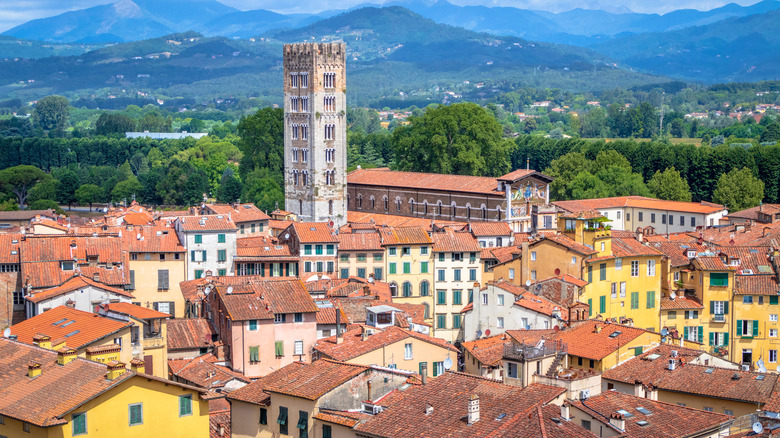Europe's 'Ellis Islands In Reverse' Are Special Museums Rick Steves Says Are Worth A Visit
As the common saying goes, the United States is a nation of immigrants. How immigrants have shaped the country is evident in everything from pop culture to grocery stores. While places like Chinatown in San Francisco and Little Italy in San Diego draw plenty of visitors, one of the biggest landmarks for immigration in the US is Ellis Island.
Ellis Island is within eyesight of the Statue of Liberty (another symbol of immigration), and just a short ferry ride away from Manhattan. This island received and documented immigrants entering the country from 1892 to 1954. In total, a whopping 12 million people stopped here first before starting their new lives in America. Millions now visit Ellis Island as a museum. However, countries of origin for large percentages of these immigrants have museums of their own, which travel expert Rick Steves calls "Ellis Islands in reverse." Countries with museums showcasing quite literally the other side of these immigration stories include Ireland, Belgium, Sweden, Italy, and more.
Many emigrants left Europe on ships docked in Antwerp
When thinking of Europe to US immigration, the significant number of Irish descendants likely comes to mind. Epic: The Irish Immigration Museum in Dublin covers why millions of Irish left their home country and headed for more places than just the US, and shares stories of both struggle and success that many of these immigrant families had after leaving. "With so much anxiety surrounding immigration in the US today, it was thought-provoking to learn how many Americans were just as worried about Irish immigrants 160 years ago," Steves mused after visiting the museum for himself.
Belgium is a country perhaps less associated with immigrants in the US, but the funky, one-of-a-kind Belgian city of Antwerp was the last bit of European soil for around two million emigrants who crossed the Atlantic with the Red Star Line shipping company. Workers from this company advertised the trans-Atlantic opportunities to people in multiple countries and helped them make trip arrangements. Journeys from Antwerp to New York City began in the late 1800s and continued as the Nazi party gained power during the 1930s. At the Red Star Line Museum, you can learn more about this unique part of the Europe to US immigration story.
Visit the beautiful city of Lucca to learn about Italian emigrants
Scandinavian Vikings conducted explorations to present-day North America in the Middle Ages, and their culture has impacted the US ever since. Think Marvel characters Thor and Loki, the Minnesota Vikings football team, or even ABBA. The first Scandinavians to arrive in the US as colonists hailed from Sweden. Large numbers arrived again as immigrants around 200 years later. Steves called the House of Emigrants in Växjö, Sweden "a fascinating stop for anyone with Swedish ancestors." This museum explains why Swedes were drawn to the US and highlights influential people with Swedish heritage like the Beach Boys and Buzz Aldrin. Växjö looks remote, but is accessible by train and surrounded by peaceful Nordic nature.
Another common nationality for people who passed through Ellis Island was Italian. Tourists are flocking to the lesser-known city of Lucca in Italy, and among this picturesque city's attractions is the Paolo Cresci Museum for the History of Italian Emigration. The museum delves into the timeline of an Italian emigrant's journey through personal items from multiple people who left Italy for new beginnings around the world. The museum also discusses hidden struggles of immigration, such as a changing sense of identity and tolerance (or lack of tolerance) of foreigners in their new homes. Immigrants of all nationalities can likely relate to these issues.


